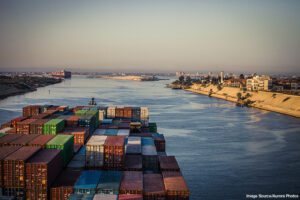
Alabama Bill Helps People with Disabilities Needing Transplants
Imagine this: you are in desperate need of a kidney transplant. But because of a disability, you can’t be put on the waiting list to receive a new kidney. That is currently the law in Alabama. However, last Tuesday, the Alabama House of Representatives voted unanimously in favor of a bill that would overturn that law, which they say is discriminatory. The bill also goes a step further, by requiring hospitals and other health care facilities to make “reasonable accommodations” for patients with disabilities who need an organ transplant.
The story of this bill began when an Alabama woman named Savannah Black learned that her young son, Exton, would not be able to receive an organ transplant if he ever needs one, because he has Down Syndrome. She read about a similar discriminatory law being overturned in Louisiana, which prompted her to reach out to Alabama State Representative Debbie Wood. Rep. Wood then drafted and introduced the bill.
Some opponents to the bill have expressed concern that it might give people with disabilities “special treatment” when it comes to receiving an organ donation. But Rep. Wood is quick to point out that this isn’t true. The new bill just ensures that everyone has an equal chance to be on the list and means that no one’s life is seen as being less valuable than any other.
Dig Deeper Now that the bill has passed the House, it moves on to the Alabama Senate for a vote. If it passes, Alabama will become one of nearly a dozen states with such laws in place. Use Internet resources to learn if your state is one of them. If it isn’t, write a letter to your representative explaining why such laws are important, and urging her or him to take action.
Crisis in the Suez Canal
Imagine the world’s most expensive traffic jam.
Last week, the whole globe watched while a huge container ship called the Ever Given got stuck in the Suez Canal. While this generated a lot of jokes and memes worldwide, it also generated a huge price tag. That’s because about 12 percent of all global trade passes through the canal every day. So during the six days that the Ever Given was blocking the canal, it’s estimated that about $14-$15 million dollars of revenue was lost. This was especially devastating for Egypt, because the Suez Canal accounts for about 2 percent of Egypt’s entire GDP (gross domestic product). Many other countries were affected as well. While the Ever Given blocked the canal, about 450 cargo ships were also stuck behind it, waiting to get through. Some cargo ships decided to take the longer route along the Horn of Africa. This lengthened travel time by about eight days. The backlog of ships is so bad that even though the Ever Given was freed on March 29th, the cost to global trade will still be between $6 to $10 billion per week until the problem is fully resolved.

Egypt has announced that it might seek compensation for the disaster–about $1 billion. In addition to lost revenue, the fee would cover repair to damages caused to the canal, as well as the cost of equipment and labor. It’s unclear who Egypt plans to seek payment from. The Taiwanese Marine Corps chartered the Ever Given, but that company claims it is not financially liable for the situation.
It took 14 tugboats to free the Ever Given, by pushing it and pulling it at high tide until it could move about 30 degrees from left to right. What caused the Ever Given to run aground in the first place? The disaster was originally blamed on high wind speeds of up to 40 knots, but the Suez Canal Authority (SCA) has since reported that the wind was not the only factor. An investigation will take place to help determine the cause.
Dig Deeper Look on the bright side! Visit this website for a collection of some of the best memes to come out of the Suez Canal crisis. Try your hand at making your own!
China Pushes Boundaries in the South China Sea
Did you know that about one-third of all global trade (equal to about $3 trillion) passes through the South China Sea every year? It is estimated to contain about 11 billion barrels of untapped oil and 190 trillion cubic feet of natural gas. This body of water is also a vital fishing resource. As a result, several of the nations that border it–China, the Philippines, Vietnam, Indonesia, Malaysia, and Brunei–lay claim to various parts of it. In recent years, China has taken aggressive action to assert its presence there.Other nations, including the U.S. and Japan, have pushed back against China’s position.
In 2016, an international tribunal (the Permanent Court of Arbitration at The Hague) determined that 90 percent of China’s claims in the South China Sea were false. The tribunal ruled in favor of the Philippines on almost every count. China refuses to recognize the legitimacy of the tribunal’s ruling. Since then, China has built airstrips and ports on disputed islands. China has built up existing reefs by adding piles of sand to them and continues to perform military actions and training in parts of the sea claimed by other nations.
These tensions were heightened in March 2021, when more than two hundred Chinese fishing vessels anchored at the disputed Whitsun Reef (Julian Felipe Reef), located about two hundred miles west of Palawan Island. Philippine Defense Minister Delfin Lorenzana has said that his navy won’t hesitate to take action if the boats aren’t removed. But China claims the boats are only there to take shelter due to poor sea conditions.
The United States has established more of a presence in the sea during the Biden administration, attempting to push back against China’s expansion in the region. The U.S. sent military ships near disputed islands and trained two U.S. Navy aircraft carriers in the South China Sea in March 2021.
Dig Deeper Gain a better understanding of this story by locating a map of the South China Sea online and identifying the following points of interest: China, the Philippines, Vietnam, Indonesia, Malaysia, Brunei the Whitsun (Julian Felipe) Reef, the Spratly Islands, and the Gulf of Tonkin.
Cleaning Up Space
Have you ever heard about space junk? It might sound like the punchline to a joke about messy aliens, but it’s what scientists call the more than 8,000 metric tons of debris that are currently floating around above Earth. Most of this space junk is old satellites and parts of spacecraft. According to NASA, at least 26,000 pieces of space debris floating around Earth right now are the size of a softball or larger. The most common size is more like a grain of salt; NASA estimates that there are currently more than 100 million such pieces in orbit.
Space junk is a problem because it interferes with GPS systems, weather forecasting, and telecommunications. The larger pieces can crash into other satellites or spacecraft, damaging or even destroying them. The smaller pieces may seem harmless, but at a high enough speed, they could puncture a spacesuit.
A private Japan-based company called Astroscale has launched a mission to help clean up some of the mess. The mission, which launched out of Kazakhstan on March 29 is called ELSA-d (End-of-Life Services by Astroscale). The mission will be run in the United Kingdom. ELSA-d uses magnetic docking technology to attach itself to metal space debris. Then it pushes the debris closer to Earth’s atmosphere, where it will burn up.
The ELSA-d manager confirmed that the launch was successful. The mission will last for the next six months. Scientists say that cleaning up space junk is becoming a greater priority as Earth’s orbit becomes more and more cluttered with satellites.
